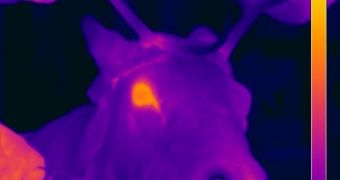Yesterday's issue of the British Medical Journal (BMJ) witnessed the publication of a new study that claims to have solved a decades-long puzzle: why it is that Rudolph's nose is red.
In order to find an answer to this dilemma that has troubled the minds of several generations, the researchers compared the noses of two mature reindeer and five human volunteers.
As explained on the official website for the BMJ, the researchers carried out an in depth analysis of said seven noses, and found that the blood vessels density in a reindeer's nose is roughly 25% higher than the one identified inside a human nose.
This conclusion was reached with the help of a hand-held video microscope, which showed that a reindeer's nose packs significantly more red blood cells than a human nose does.
Thus, Rudolph's nose is red thanks to its being highly vascularized. This feature protects it from freezing and also helps keep the reindeer's brain temperature well under control, the scientists explain.
“The nasal microcirculation has important physiological roles such as heating, filtering, and humidifying inhaled air, controlling inflammation, transporting fluid for mucous formation, and delivering oxygen to the nasal parenchymal cells,” the study reads.
In other words, Rudolph's red nose is merely a result of its adapting to both its surroundings, and its job.
As the researchers put it, “These factors explain why the nose of Rudolph, the lead flying reindeer employed by Santa Claus to pull his sleigh, is red and well adapted to carrying out his duties in extreme temperatures.”
Besides being highly vascularized, the reindeer's nose also displays several mucous glands which, “maintain an optimal nasal climate during changing weather conditions and extremes of temperature as well as being responsible for fluid transport and acting as a barrier.”
As seen in the picture, thermal imaging confirmed the theory that reindeer do in fact have red noses.

 14 DAY TRIAL //
14 DAY TRIAL //